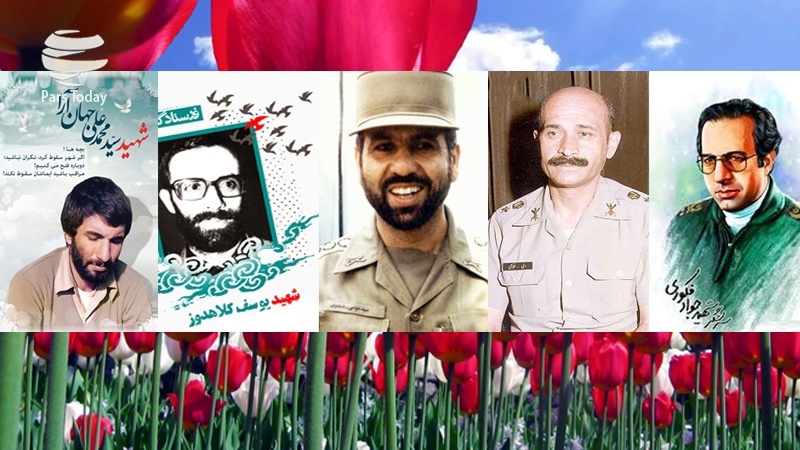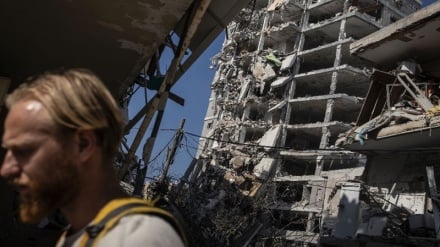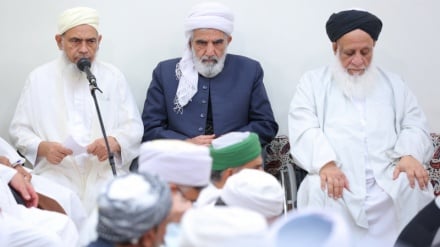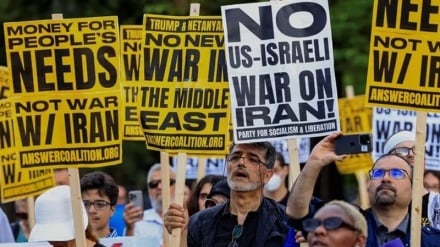Sacred Defense Week (The role and status of commanders in victory of Sacred Defense)
Today's episode briefs you on the lives and achievements of five senior commanders of Iran's Armed Forces throughout the eight-year Sacred Defense, who attained martyrdom in a plane crash on September 29, 1981.
In the calendar of Islamic Republic of Iran, September 29 has been named as the day of commemoration of the martyred commanders of the Sacred Defense. On September 29, 1981, following the breakage of siege of the city of Abadan, a C-130 Plane which was carrying five of the senior Iranian commanders of the imposed war era, for presentation of a report to the Founder of Islamic Republic of Iran, late Imam Khomeini (May his soul rest in peace), crashed in the vicinity of Tehran. In this tragic incident, 49 passengers onboard this plane, including five of the senior commanders of the Sacred Defense era courted martyrdom. The then defense minister of Islamic Republic of Iran, Brigadier General Seyed Mousa Naamjou; Martyr Yousof Kolahdouz., the then deputy commander of Islamic Revolution Guards Corps; Brigadier General Javad Fakouri, the former commander of the Air Force; Major General Valiollah Fallahi, the acting chairman of the Joint Chiefs of Staff of the Islamic Republic of Iran's Army; and Mohammad Ali Jahanara, the commander of Khorramshahr's Islamic Revolution Guards Corps, were the five senior commanders of the Sacred Defense era who attained martyrdom in this plane crash. One of the most important features of these five senior commanders of the Sacred Defense era was their devotion and loyalty toward the Father of Islamic Revolution, late Imam Khomeini (May his soul rest in peace). Although figures such as Martyr Fallahi, Martyr Fakouri, and Martyr Naamjou spent part of their military careers in the previous Pahlavi regime; they wholeheartedly served the Islamic Revolution; and their devotion and loyalty toward late Imam dated back to the years prior to victory of Islamic Revolution. According to Martyr Fakouri's wife; he announced his preparedness to hit Shah's palace with his plane, upon late Imam's permission.
All of these senior commanders were pioneers throughout their academic studies, military service, familial life, and the post-Islamic Revolution era. Martyr Fakouri carried out his first independent flight in the year 1960 with a T-33 plane, for 1.5 hours. In order to attend a flight training course, he was sent to the US, managing to gain a piloting certificate for F-4 bombers after a year and a half. Thereafter, he returned to Iran, serving at Mehrabad base as a 2nd Lieutenant. In the year 1977, he was sent to US for attending a military training course, returning to Iran after completion of his course in the year 1979. He was one of the best pilots of F-4 jetfighters prior to victory of Islamic Revolution in February 11, 1979. Martyr Fakouri sought the victory of Islamic Revolution and independence of his country. He was a pious and devout officer, and was committed to observation of Islamic rituals. He vigilantly chose his path, which led to his devotion and loyalty toward the divine religion of Islam. According to Martyr Fakouri's wife, he strongly believed in the sacred religion of Islam. Upon his martyrdom, Iran's army lost one of its most skilled pilots and one of its main theorists. He rendered valuable services to the Army, and especially to the Air Force of Islamic Republic of Iran.
The then minister of defense of the Islamic Republic of Iran, Seyed Mousa Naamjou, maintained characteristic traits which were similar to those of Martyr Fakouri. Martyr Naamjou was a highly qualified and intelligent officer. He was born in Anzali Port in northern Iran in the year 1938. After completion of his initial studies, he entered the military academy. He began his political activities in the army as of the year 1971, such that if the Islamic Revolution had not emerged victorious, he would have been executed by the Pahlavi despotic regime. Martyr Naamjou succeeded Dr. Mostafa Chamran, as late Imam's representative in the High Defense Council. Martyr Naamjou was instated as the minister of defense in Dr. Bahonar's Cabinet.
Upon the victory of Islamic Revolution, Martyr Naamjou was instated as the commander of the military academy. He was always known as a religious person during his academic studies and military service. He was one of the army officers who were in touch with late Imam, prior to victory of Islamic Revolution. Martyr Naamjou distributed the tapes and statements of late Imam prior to culmination of the Islamic Revolution. Upon the invasion of Iran by Saddam's troops, Martyr Naamjou organized the first volunteer groups which were dispatched to the southern Iranian city of Ahwaz to confront Saddam's army. Martyr Naamjou played a vital and decisive role in administration of the war until his martyrdom.
Martyr Valiollah Fallahi was one of the few commanders of the army after the victory of Islamic Revolution, who was a brigadier general in the pre-Islamic Revolution era. However, his political and religious life led revolutionary figures to trust him. He was instated as the commander of the Ground Force of Islamic Republic of Iran's Army in the early days after the victory of Islamic Revolution. He went to the military academy in the year 1951, graduating from the military academy in the year 1954 as a 2nd Lieutenant. Thereafter, he was sent to the 92nd armored division of the army's ground force in the city of Ahwaz. He was transferred to Tehran in the year 1958. Throughout his career, he maintained a number of managerial posts, such as the command of the Ground Force, and chairmanship of Army's Joint Chiefs of Staff. He was a religious and pious individual. His characteristic traits influenced his associates. He considered guidance of students in the military academy as his duty, as a means to serve the sacred religion of Islam and his country. He was skilled and meticulous in his duties, and was respected by his colleagues. He was also a patriot.
Martyr Yousef Kolahdouz is one of the well-known military and religious figures, who began his professional life by serving in the army. Upon receipt of his diploma, he entered the military academy. He aimed for recruiting the religious personnel of the army for standing up against Shah's despotic regime. He was in touch with late Imam via a number of mediators. He dismantled the tanks of Pahlavi regime which aimed to occupy the place of residence of late Imam and a number of sensitive regions of the city of Tehran on February 10, 1979; once again showing his loyalty to late Imam and his country. Some of the measures that he carried out after the victory of Islamic Revolution, include establishment of a military committee in Alawi School, which was the place of residence of late Imam; establishment of Islamic Revolution Guards Corps upon late Imam's instruction; launch and development of the educational units of the Islamic Revolution Guards Corps. He also played a pivotal role in preparation of the charter of Islamic Revolution Guards Corps. He was the deputy commander of Islamic Revolution Guards Corps at the time of his martyrdom.
The youngest commander who attained martyrdom in the plane crash, was Mohammad Jahanara. He was 27 years old. He was the commander of Islamic Revolution Guards Corps of the city of Khorramshahr, who with the assistance of volunteer and popular forces, stopped Saddam's army behind the gateways of this southern Iranian city for 34 days. Khorramshahr is the epitome of the efforts, loyalty, and selflessness of youths who defended this south Iranian city against Saddam's troopers.
MR/ME



